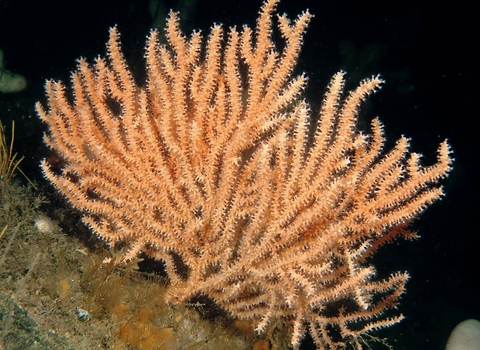
Pink sea fan ©Paul Naylor www.marinephoto.co.uk
Pink sea fan
Did you know we have colourful corals in UK seas? Pink sea fans are a type of horny coral - related to the sea fans found in the tropics. Don't be fooled by their name though, pink sea fans can actually be pink, orange or white.
Scientific name
Eunicella verrucosaWhen to see
January to DecemberSpecies information
Category
Statistics
Height: 25-50cmNationally scarce and globally vulnerable. Here in the UK, the pink sea fan is protected under the Wildlife and Countryside Act 1981. It is also a Priority Species under the UK Post-2010 Biodiversity Framework and a Feature of Conservation Importance for which Marine Conservation Zones can be designated. The pink sea fan is classified as Vulnerable on the global IUCN Red List.
